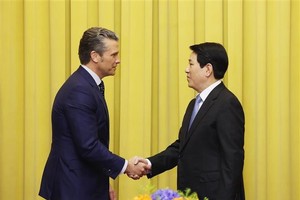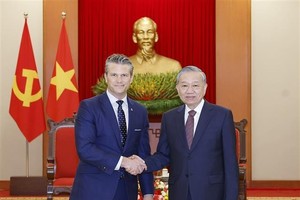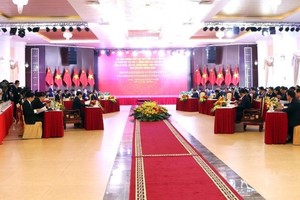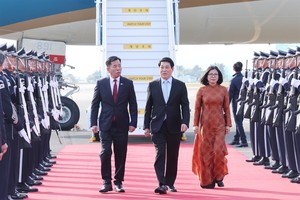OSAKA, March 21, 2011 (AFP) - In the scramble to avert catastrophe at the stricken Fukushima nuclear plant, selfless workers are volunteering to repeatedly endure high doses of radiation for the sake of millions of people.
Even if the engineers succeed in restoring power to the plant, crippled by a giant earthquake and tsunami, they have risked permanent health damage. On Friday, Prime Minister Naoto Kan said the workers were "prepared for death".
But they have nevertheless raised their hands to return into a hellish, toxic environment to hook up power cables, inspect machinery and identify where firefighters should aim powerful hoses to cool reactors.
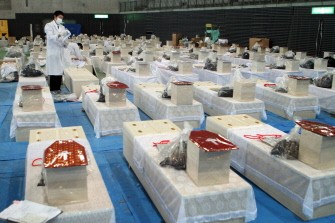
Self-Defense Forces and firemen have repeatedly driven trucks up to overheating reactors spewing radiation to douse them with water.
"I will work until the limit," one technician in his 30s told his employer, plant operator Tokyo Electric Power Co., an official revealed in a press conference late Sunday.
Another engineer, who works for a TEPCO subsidiary, told the Mainichi daily on Monday: "I am worried of course. We are working in an area exposed to this much high radiation and we're still unsure of what will happen.
"There might be another explosion, or the radiation level may rise. Of course I have the option of refusing -- my family is telling me to do so. It's an extremely hard decision, and I'm sure everyone is thinking that way."
TEPCO on Monday said the number of workers exposed to at least 100 millisieverts -- twice the annual limit for Japanese plant workers under normal circumstances -- doubled to 13 from the previous day.
The utility has declined to give specific figures. An exposure of 100 millisieverts per year is considered the lowest level at which any increase in cancer risk is evident.
A worker was sent to hospital complaining of nausea and sluggishness after absorbing over 100 millisieverts while working to open valves at a reactor's containment structure to release pressure, TEPCO said.
Experts say that a person exposed to radiation at 400 millisieverts will experience a drop in white blood cells, and beyond that level will suffer acute nausea, hair loss and other symptoms. A dose of 5,000 millisieverts is fatal.
The average dose per year is two millisieverts from the sun's rays, rocks and soil.
Some 800 workers evacuated the plant last week with 50 staying behind, earning the nickname "Fukushima Fifty". But that number has swollen by a few hundred, including technicians sent from partners such as Toshiba and Hitachi.
The workers have been lauded as saviours across the nation. A Tokyo Fire Department official on Sunday described a battle against "invisible enemies".
"With all due respect, it is just amazing how the workers continue this mission while knowing what sort of impact it may have on their health," said a nuclear safety agency official.
Levels of radioactivity and temperature have stabilised following round-the-clock dousing in the past couple of days, but radiation surged to 400 millisieverts per hour last week after explosions and fire ravaged the plant.
"The people working at these plants are fighting without running away," said Michiko Otsuki, who worked at the nearby Fukushima No. 2 plant which was also badly damaged by the March 11 earthquake and tsunami.
She said in an entry on social networking site Mixi that her boyfriend, who also works at the plant, had tearfully told her "you go ahead to safety", before she evacuated in a company car.
"The people who will have their health affected are the staff who are working hard at the plant. They are on site without sleeping or eating," she wrote. "I can only pray for the safety of everyone."
"Please don't forget... that these are people who are working to protect everyone's lives in exchange for their own lives."
Japan last week hiked the emergency exposure limit to 250 millisieverts from 100. That is five times higher than the normal maximum exposure permitted for Japanese and US nuclear plant workers, and 12 times that of French workers.
In the early days of the plant's rescue mission, Self-Defense Forces attempting to water-bomb the reactors gave up due to the high levels of radiation.
Workers -- clad in white Tyvex suits, goggles and face masks -- also wear dosimeters that start beeping to alert them if they are exposed to 80 millisieverts. But the clothing may not be enough to block all radiation.
TEPCO has declined to say by how much workers' exposure has exceeded 100 millisieverts. The operator has also refused to reveal the identities of the workers, citing privacy.
For TEPCO, the hazards endured by the employees are part of their work, for which they have had years of training.
"It's their job," an official said.


